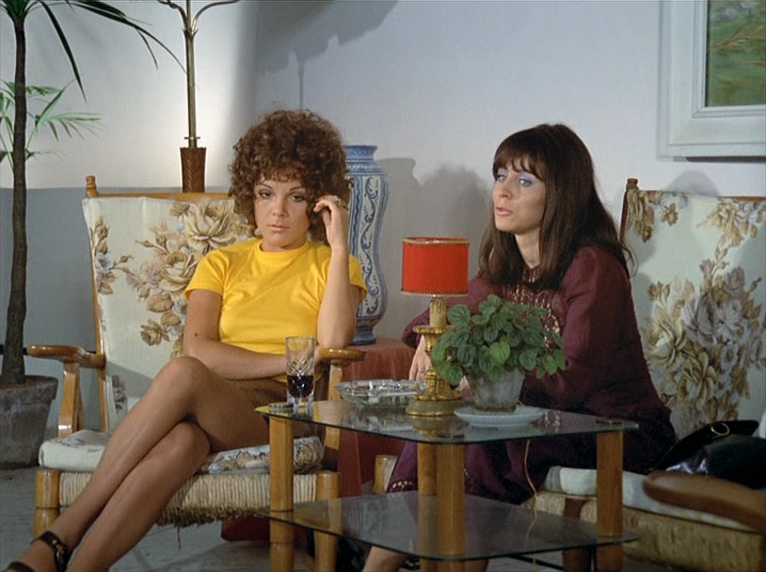
On a film set in Spain, cast and crew are waiting for the director to arrive. Boredom makes them engage in abusive power games and sexual intrigues. When the director finally shows up on set, mayhem ensues. Based on the filming of Fassbinder’s 1971 film Whity, Warnung vor einer Heiligen nutte offers a behind-the-scenes look at the dysfunctional dynamics of film production.
« Prenez garde à la sainte putain est le théâtre d’une annulation. L’acteur s’y dévore lui-même, abandonne et laisse derrière soi le corps plein des passions, pour devenir la figure polémique du dénuement qu’une violence innommable à force d’être évidente vous a infligé. L’effigie d’angoisse (honte, vilenie, lâcheté, indifférence, informe bêtise) que joue l’acteur révèle, comme les gestes saccadés des marionnettes les points d’attache aux fils qui les retiennent, ce qui détermine, instant par instant et jusqu’au plus intime, une telle déréliction. Le comédien imaginaire élaboré ici par Fassbinder est pitoyable et burlesque, défait par sa propre apathie ; l’acteur chargé de jouer cette morne silhouette dresse un constat d’accusation terrible et il invente le répertoire par lequel le jeu devient un réquisitoire contre la privation affective, contre la privation de soi. »
Nicole Brenez1
“A film about why living and working together as a group doesn’t function, even with people who want it to and for whom the group is life itself.”
Rainer Werner Fassbinder2
"While Wolfgang Limmer claims that Beware of the holy whore is indeed more or less a documentary of what happened in Almeria during the shooting of Whity, the autobiographical and anecdotal interpretation tends to obscure some crucial features: first of all, the fact that with this film Fassbinder was able to analyse very clearly the dynamics of leader and led, and the emotional intimacy between victim and victimizer in any situation involving power, sexuality and creativity.
Equally lucid is the analysis of the mutual dependencies existing between Fassbinder and his team, ever since the days of the action-theatre, an experience here depicted from a great distance, the distance, however, reflecting also moral closeness and emotional empathy. This paradoxical stance allows Fassbinder to make out of the many kinds of 'whoring' necessary to the creative endeavour in a collective art such as theatre or film, a most elegantly interwoven, cogently developed, deceptively spontaneous narrative. In short, stepping back from what he suffered and made others suffer, while stepping towards what he knew best and cared about most, Fassbinder seems to have experienced neither personal catharsis nor moral enlightenement, but a technical breakthrough in respect of his story-telling skills and his control of the mise-en-scene of a large cast of characters, each of whom has a point of view to embody and a position to defend."
Thomas Elsaesser3
- 1Nicole Brenez, De la figure en général et du corps en particulier: L'invention figurative au cinéma (Louvain-La-Neuve: De Boeck Supérieur, 1998), 243-252.
- 2Michael Koresky, "Eclipse Series 39: Early Fassbinder," criterion, August 2013.
- 3Thomas Elsaesser, Fassbinder's Germany History Identity Subject (Amsterdam: Amsterdam University Press, 1996), 274-275.

